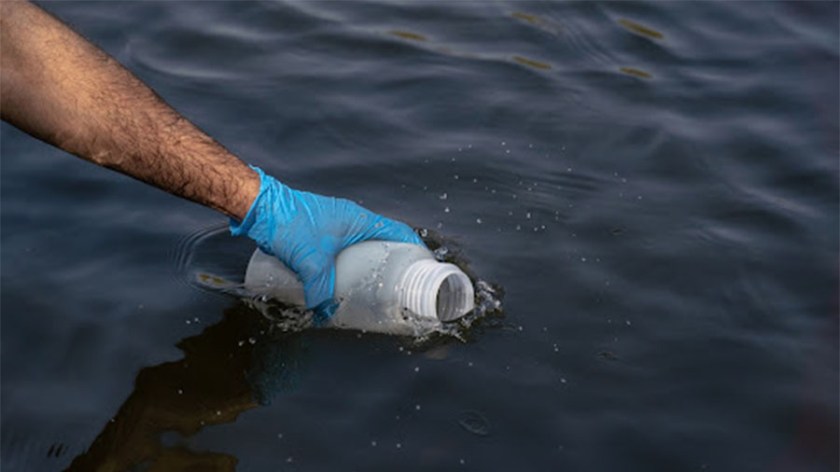Pensoft is to contribute to the OBSGESSION consortium with expertise in science communication by taking care of stakeholders engagement, thereby supporting its goal of improved terrestrial and freshwater biodiversity monitoring. As a leader of the Work Package 6: “Dissemination, Multi-stakeholder outreach and synergies,” Pensoft is tasked to build an involved community around OBSGESSION.
Terrestrial and freshwater biodiversity has been declining at an alarming rate due various factors such as intensification of anthropogenic activities and climate change.
To help protect and preserve precious ecosystems, the new research project OBSGESSION (Observation of Ecosystem Changes for Action) launched, jointly funded under the EU programme Horizon Europe, the UK Research and Innovation (UKRI) and the University of Zurich (UZH).
Coordinated by the Finnish Environmental Institute (Syke), OBSGESSION aims to reveal the drivers of biodiversity loss, pinpoint important indicators of ecosystem health and inform sustainability policy.
The project
OBSGESSION launched in January 2024 and will wrap up in December 2027 with the support of ~7.3 million EUR of funding, provided by the European Union’s Horizon Europe program, The UK Research and Innovation program (UKRI), and the University of Zurich (UZH).

The project officially kicked off with the first consortium meeting in Tuusula, Finland, between 30th January and 2nd February.
For the coming four years, the joint mission before the newly formed consortium is to integrate biodiversity data sources, such as Earth Observation, with in-situ research, and also cutting-edge ecological models. These will all be made into a comprehensive product for biodiversity management in both terrestrial and freshwater ecosystems.
The project will also spearhead an innovative approach for assessing Essential Biodiversity Variables (EBVs) and their resilience to errors. Through purposely propagating error into biodiversity estimates and comparing the resulting models with ones using correct estimates, the EBV case studies aim to investigate model uncertainties and identify approaches that are more sensitive. Thus, they will inform policy and management about the optimal EBVs, and their key thresholds for conservation.
To demonstrate the implementation of the techniques and methodologies they are to develop within the project; and to respond to the needs of the EU Biodiversity Strategy for 2030, the consortium will focus on six distinct pilot activities:
- Investigating and predicting biodiversity change in the European Alps: multi-scale, multi-modal and multi-temporal investigation using remote and in-situ data integration.
- Improving habitat classification models: going beyond state-of-the-art in terms of accurate high-resolution mapping of Europe’s habitats, powered by machine learning.
- Forecasting ecosystem productivity under disturbances & climate change: incorporating remote sensing EBVs to assess metrics of ecosystem structure and health.
- Supporting temperate and boreal forest protection & restoration: through assessing ecosystem conditions via eDNA & image spectroscopy.
- Monitoring freshwater ecosystems under disturbances & climate change: utilizing the novel Thematic Ecosystem Change Indices (TECIs).
- Ecosystem functioning of the Kokemäenjoki estuary – assessing freshwater & transitional water quality incorporating both in-situ and Earth Observation data.
Through its pilot studies, methodological assessments, data stream integration, and investigating land use cover changes across Europe, OBSGESSION will help improve our understanding of ecosystem vulnerability across a range of specific habitat types, identify drivers and pressures to ecosystem change and improve planning and prioritization of restoration measures.
“At Pensoft, we are eager to be part of the bright OBSGESSION consortium and look forward to offering our expertise and experience in raising awareness towards the project and contributing to the high impact of the resulting outputs, methodologies and policy recommendations that aim to strengthen our understanding of biodiversity change,”
says Gabriela Popova, science communicator at Pensoft and leader of the Work Package #6: “Dissemination, Multi-stakeholder outreach and synergies” at OBSGESSION.
International Consortium
The interdisciplinary OBSGESSION consortium consists of 11 partnering organisations from seven European countries, who bring diverse expertise spanning from remote sensing and Earth observation, to freshwater ecosystems, programming and science communication. Many partners represent acclaimed scientific institutions with rich experience in collaborative EU projects.
Full list of partners:
- Finnish Environmental Institute (SYKE)
- University of Twente
- University of Lund
- Flemish Institute for Technological Research (VITO)
- Wageningen University & Research
- The Spanish National Research Council (CNRS)
- Pensoft Publishers
- Brockmann Geomatics Sweden
- Brockmann Consult
- World Conservation Monitoring Centre (UNEP-WCMC)
- University of Zurich (UZH)
Find more on the OBSGESSION website: https://obsgession.eu, and follow the project on X/Twitter (@obsgession_) and Linkedin (/obsgession-horizoneurope).













